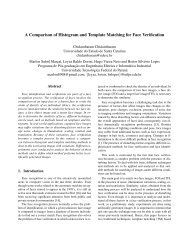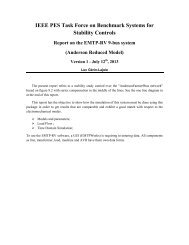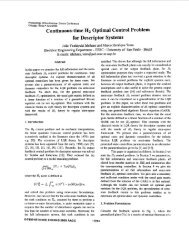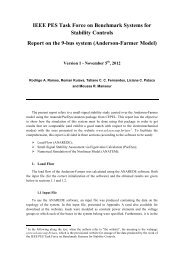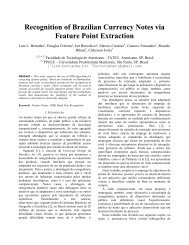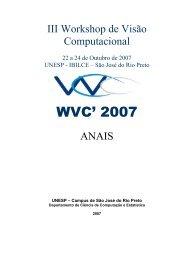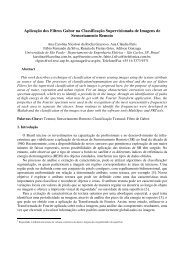The Ethics of Banking: Conclusions from the Financial Crisis (Issues ...
The Ethics of Banking: Conclusions from the Financial Crisis (Issues ...
The Ethics of Banking: Conclusions from the Financial Crisis (Issues ...
Create successful ePaper yourself
Turn your PDF publications into a flip-book with our unique Google optimized e-Paper software.
84 6 <strong>The</strong> Ethical Economy <strong>of</strong> <strong>the</strong> Market for Derivatives<br />
are willing to do so. 2 Futures and options <strong>the</strong>refore serve <strong>the</strong> primary purpose <strong>of</strong><br />
hedging, <strong>the</strong> protection <strong>of</strong> an asset or value against a future change in value and<br />
<strong>the</strong> transfer <strong>of</strong> <strong>the</strong> risk <strong>of</strong> such a movement in value <strong>from</strong> <strong>the</strong> party who would<br />
ra<strong>the</strong>r hedge than bear <strong>the</strong> risk to ano<strong>the</strong>r party who is willing to bear <strong>the</strong> risk in<br />
exchange for a fee. However, for those in need <strong>of</strong> protection to be sure that <strong>the</strong>ir<br />
demand for futures and options will be matched by a supply, <strong>the</strong>re must be suppliers<br />
<strong>of</strong> futures contracts who ei<strong>the</strong>r hold <strong>the</strong> contrary expectation about <strong>the</strong> future, and<br />
have an equal demand for protection against <strong>the</strong> complementary movement in value<br />
that <strong>the</strong>ir complementary future expectation leads <strong>the</strong>m to anticipate, or else a group<br />
<strong>of</strong> suppliers who are motivated by speculation and/or arbitrage to ensure a supply<br />
<strong>of</strong> futures or options. <strong>The</strong> demand for hedging and <strong>the</strong> meeting <strong>of</strong> that demand<br />
presupposes a supply <strong>of</strong> futures and options motivated by speculation, and hence<br />
a certain volume <strong>of</strong> speculation in futures and options. Both <strong>the</strong> hedging and <strong>the</strong><br />
speculation motives determine <strong>the</strong> market for futures and options.<br />
Structured finance products are investment vehicles like certificates (e.g. index<br />
or basket certificates) which comprise a least one derivative element. 3 Unlike shares<br />
or o<strong>the</strong>r capital-market products, but also unlike fixed-interest securities, <strong>the</strong>y are<br />
structured by incorporating a derivative component. <strong>The</strong>y can be seen as hybrids <strong>of</strong><br />
credit-market and capital-market instruments, although <strong>the</strong> term “hybrid security”<br />
is used for products like convertible bonds which can actually be transformed in<br />
nature. A classic hybrid product is <strong>the</strong> convertible bond, a bond – i.e. a loan to<br />
<strong>the</strong> corporation – which is converted into a share in <strong>the</strong> corporation, a share <strong>of</strong> its<br />
common stock.<br />
In fact, structured products <strong>the</strong>mselves are hybrid securities, in that <strong>the</strong>y are<br />
hybrid constructs consisting <strong>of</strong> a fixed-interest and a derivative component. 4 <strong>The</strong><br />
invention <strong>of</strong> <strong>the</strong> collateralized debt obligation created a form <strong>of</strong> security and a<br />
financial instrument that combines loan elements with elements <strong>of</strong> equity financing.<br />
<strong>The</strong> distinction between <strong>the</strong> credit market and <strong>the</strong> capital market cannot be<br />
stringently maintained for <strong>the</strong>se securities. <strong>The</strong>y belong to both markets. <strong>The</strong> creation<br />
<strong>of</strong> structured products or certificates likewise results in financial instruments<br />
that are hybrid in character and cannot be ascribed to just one market or <strong>the</strong> o<strong>the</strong>r.<br />
2 Cf. also RENÉ M. STULZ: “Should We Fear Derivatives?”, Journal <strong>of</strong> Economic Perspectives,18<br />
(2004), pp. 173–192, although he understates <strong>the</strong> risks <strong>of</strong> <strong>the</strong> massive expansion <strong>of</strong> derivatives.<br />
3 Cf. SARYAJIT DAS: Structured Products and Hybrid Securities, Hoboken, NJ (John Wiley) 2nd<br />
edn. 2001, p. 1: Structured products are “derivative-embedded securities, a security that combines<br />
<strong>the</strong> features <strong>of</strong> a fixed income instrument with <strong>the</strong> characteristics <strong>of</strong> a derivative transaction (in<br />
effect, <strong>the</strong> return pr<strong>of</strong>ile <strong>of</strong> a forward or option on a selected class <strong>of</strong> asset.)”<br />
4 SARYAJIT DAS: Structured Products 4: Equity, Commodity, Credit and New Markets: 2, Hoboken,<br />
NJ (John Wiley) 2005 (Swaps & <strong>Financial</strong> Derivatives Library), gives a list <strong>of</strong> structured products<br />
including: equity derivatives (including equity swaps/options, convertible securities and equity<br />
linked notes), commodity derivatives (including energy, metal and agricultural derivatives), credit<br />
derivatives (including credit linked notes/collateralized debt obligations (“CDOs”)), new derivative<br />
markets (including inflation linked derivatives and notes, insurance derivatives, wea<strong>the</strong>r derivatives,<br />
property, bandwidth/telephone minutes, macro-economic index and emission/environmental<br />
derivatives) and tax based applications <strong>of</strong> derivatives.




